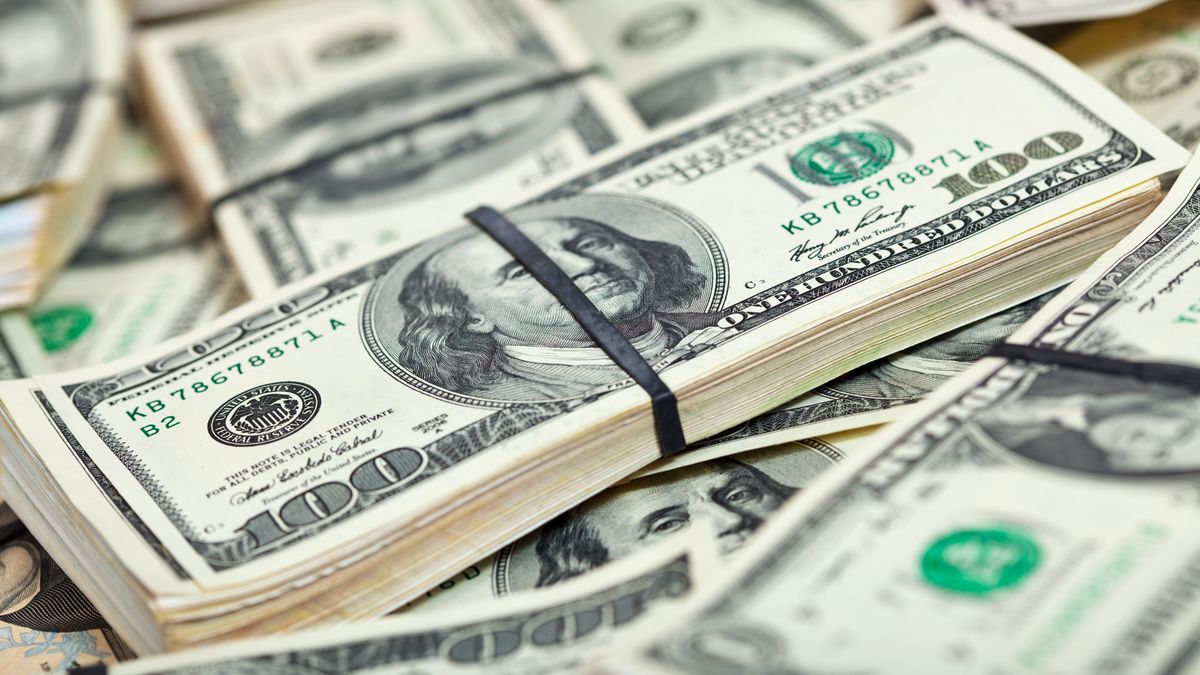In turn, the MEP dollar rises $3.19 (+1%) to $312.17, its highest value since the end of July. Consequently, the spread with the official reaches 91.1%.
In the informal market, on the other hand, the Blue dollar stops its upward climb and drops $1 to $307, from its highest value in three and a half months.
The inflationary escalation that could reach 100% this year, a high fiscal deficit, few reserves in the Central Bank (BCRA) and political and social tensions create an uncertain climate among investors looking for hedges.
“Financial exchange rates continue to recover ground in the face of inflation and the yield of interest rate placements, pushed by the perception of a certain relative delay and an increase in liquidity in the market due to the acceleration of the purchases of bonds in pesos of the BCRA (+$210,000 million in the last 30 days)”, commented from Delphos Investment.
Beyond the fact that this Wednesday he ended a streak of 13 consecutive days with sales, The BCRA accumulates in November a drain of dollars of more than US$900 million.
“Concerns about the dynamics of net reserves remain at the center of the scene, and so new measures on the supply and demand of foreign currency are expected in the short term in search of achieving a better balance in the exchange balance,” an operator pointed out.
In this framework, more and more investors seem inclined to close bets on the carry-trade, and move towards greater coverage after the accumulated delay in the midst of a climate of high inflation, they say at the tables.
“Even after the recent movements of the CCL, we assume that if the Central Bank’s strategy of trying to avoid accelerating the official exchange rate through exchange restrictions is maintained, the financial dollars should advance at a higher average speed in the coming months, assuming the delay against the rest of the variables and the current gap”, analyzed Lucas Yatche, Head of Strategy and Investments at Liebre Capital.
The specialist projected that “We are coming weeks of extreme volatility, in a framework where Treasury tenders and the level of net reserves will play a fundamental role in the movements of the different exchange rates.”
Dollar in the world and the region
As in Argentina, in the region, the currencies operated with significant losses, amid an advance in the dollar due to doubts about a decline in inflation in the United States in light of the latest economic data. The dollar rose on Thursday as investors digested mixed US economic data.
The dollar fell in recent weeks due to inflation data and comments from Federal Reserve officials have suggested that the central bank may soon slow the pace of its interest rate hikes.
However, the dollar rose on Thursday after stronger-than-expected US retail sales data for October, released on Wednesday. The US currency was up about 0.7% against a basket of six major currencies that make up the dollar index.
In Latin America, losses were led by the Chilean peso, which fell 1.49%, to 922.20/922.50 per dollar, further pressured by a sharp drop in the price of copper, the country’s main export.
In turn, the Brazilian real depreciated 0.96%, to 5.4524 units per dollar, after the incoming government of President-elect Luiz Inácio Lula da Silva proposed exempting some 175 billion reais ($32 billion) from next year’s budget spending cap to pay for social programs.
Lula, earlier in the day, shrugged his shoulders at the market’s reactions to his proposals and again criticized the spending ceiling, saying that the government should not only think about “fiscal responsibility” but also about “responsibility Social”.
The Mexican peso was trading at 19.4331 per dollar, with a loss of 0.48% against Wednesday’s reference price.
The Colombian peso depreciated 1.31% to 5,015 units per dollar, on its third day of losses.
The Peruvian sol fell 0.37%, to 3.8431 units per dollar, while the benchmark of the Lima Stock Exchange lost 0.55%, to 581.85 units.
Savings dollar price, Thursday, November 17
The dollar savings or solidarity dollar-which includes 30% of the tax COUNTRY and 35% deductible from Income Tax and Personal Assets- rises 36 cents and trades at $280.20.
Price of the tourist dollar, Thursday, November 17
The tourist dollar or card -retailer plus COUNTRY Tax, and a perception of 45% deductible from Income Tax and Personal Property Tax for consumption with cards abroad of up to US$300 per month- increases 39 cents and reaches $297.19.
Qatar dollar price, Thursday, November 17
The new qatar dollar -which includes 30% of the COUNTRY tax, 45% deductible from Income Tax and Personal Property TaxY a new perception of 25% on account of Personal Assets- increases 44 cents and operates at $339.64.
It is worth noting that this exchange rate applies to Consumption abroad with debit and credit cards over US$300 per month.
Price of the wholesale dollar, Thursday, November 17
The wholesale dollar, that directly regulates the BCRA, rises 38 cents to $162.85. The volume operated in the spot segment was US$259,087 million.
Price of the CCL dollar, Thursday, November 17
The Dollar Cash with Settlement (CCL) rises $3.47 (1.1%) to $328.09, a new maximum in three and a half months. Thus, the gap with the official wholesale exchange rate reached 102.1%.
MEP dollar price, Thursday, November 17
For his part, he MEP dollar falls 94 cents and trades at $308.04. Thus, it is held around its highest value since the end of July. Consequently, the spread with the official reached 89.2%.
Price of the crypto dollar, Thursday, November 17
The crypto dollar or Bitcoin dollar earn 1.7% and quote to $320.12, based on the average among local exchanges reported by Coinmonitor.
Source: Ambito
I am a 24-year-old writer and journalist who has been working in the news industry for the past two years. I write primarily about market news, so if you’re looking for insights into what’s going on in the stock market or economic indicators, you’ve come to the right place. I also dabble in writing articles on lifestyle trends and pop culture news.




